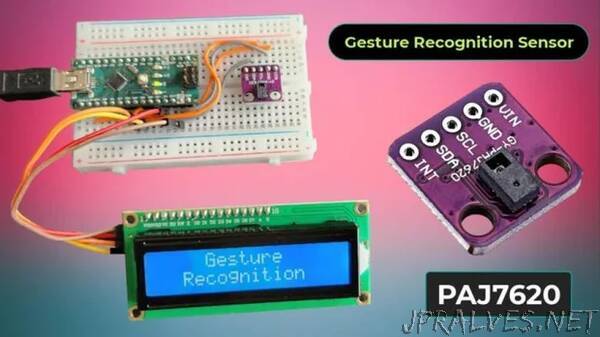
“In this project, we’ll enhance a Hand Gesture Recognition System using the PAJ7620 Sensor and an Arduino Board. The PAJ7620 sensor is capable of recognizing nine distinct gestures, including moving up, down, left, right, forward, backward, clockwise, anti-clockwise, and waving. This system can find extensive use in medical applications, or for controlling lights, robots, human-machine interfaces, and games by leveraging the power of an IR LED and optical CMOS array.
Gesture Recognition is a technology that capitalizes on sensors to interpret hand movements as distinct commands. While gestures can originate from any body motion or state, they are typically derived from the face or hands. A gesture, by definition, must be visible to another party and must convey specific information. Thus, Gesture Recognition can be viewed as a means for computers to understand and respond to human body language.
Previously, we delved into the APDS9960 Gesture Recognition and RGB Color Sensor.
Bill of Materials
- Arduino Nano Board
- PAJ7620 Gesture Recognition Sensor
- 16x2 I2C LCD Display
- Jumper Wires
- Breadboard
This product utilizes the sophisticated PAJ7620U2 gesture recognition sensor, which can detect nine distinct gestures in various directions, including up, down, left, right, front, back, clockwise, counterclockwise, and wave.
PAJ7620 Gesture Recognition Sensor
The gesture recognition module communicates via the I2C interface, enabling it to be programmed and controlled using the dedicated PAJ7620 Arduino library function. Signals emitted by this module can be harnessed as control signals for robots, facilitating seamless robot operation.
Our product incorporates an intelligent recognition algorithm that liberates users from conventional and limiting button-based controls. Gesture recognition sensors are well-suited for contactless control applications such as touch-free mice, smart homes, vehicle control device interactions, robot interfaces, and more.
Additionally, the PAJ7620U2 features an integrated proximity detection function, enabling it to sense objects as they approach or move away. The PAJ7620U2 boasts a flexible power-saving design, operating efficiently between 2.8V to 3.3V in a temperature range of -40°C to +85°C. The pull-up voltage for the I2C bus and the interrupt line ranges from 1.8V to 3.3V.”
